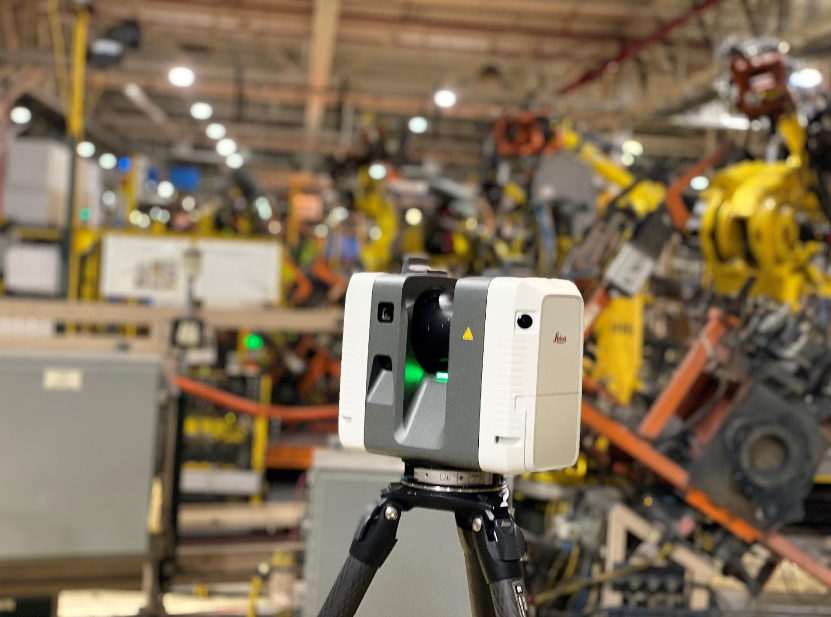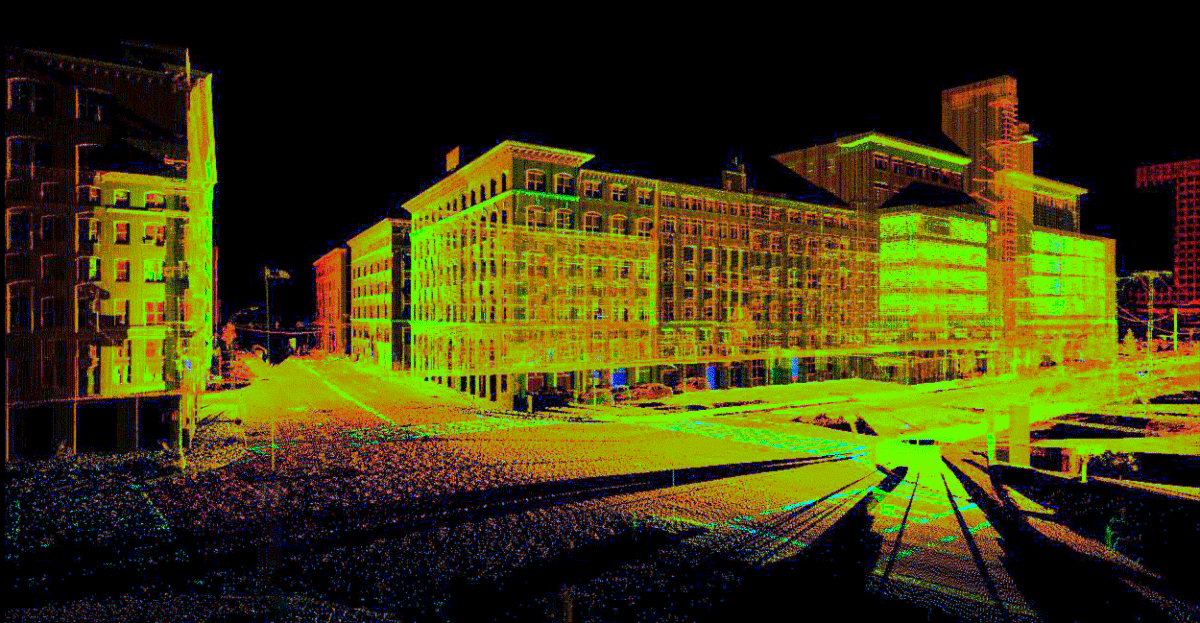Why 3D Scanning Improves Retrofits
Wiki Article
The Future of Precision Measurement: Understanding the Function of 3D Laser Scanning Innovation
The landscape of precision dimension is advancing with the introduction of 3D laser scanning technology. This technology guarantees improved accuracy and efficiency across various fields. As industries start to welcome these advancements, the effects for task administration and execution become progressively substantial. The transformative impacts of this technology expand beyond plain numbers and measurements, hinting at a more comprehensive shift in just how experts approach their work. What might this mean for the future?What Is 3D Laser Scanning Technology?
3D laser scanning modern technology is an innovative method utilized to capture accurate three-dimensional measurements of physical items and environments. This technology makes use of laser beam of lights to accumulate data points, which are after that refined to develop detailed electronic depictions of the scanned subjects. By producing countless laser pulses per second, 3D laser scanners can accurately tape the form, dimension, and spatial connections of various surface areas.The process generally includes placing the scanner at different vantage points to capture comprehensive data. The resulting point cloud, a collection of millions of information factors, can be examined and exchanged 3D models. Applications of this technology period numerous areas, including design, heritage, and design conservation, where it helps in documentation and evaluation. As a non-intrusive approach, 3D laser scanning lessens interruption to the setting, permitting for thorough assessments of both existing structures and natural landscapes, therefore boosting understanding and facilitating notified decision-making.
Trick Advantages of 3D Laser Scanning in Numerous Industries
3D laser scanning innovation supplies significant advantages throughout various sectors by supplying improved precision and precision in measurements. This modern technology not only streamlines operations however likewise causes substantial time and expense financial savings. As companies progressively embrace this cutting-edge method, the advantages come to be evident in enhanced project outcomes and effectiveness.Improved Accuracy and Precision
The combination of laser scanning technology has revolutionized the means industries approach measurement and information collection. This innovation gives an extraordinary degree of precision, catching millions of information factors in a solitary scan. Because of this, professionals throughout various areas, such as style, manufacturing, and design, can produce highly outlined 3D models that reflect real-world conditions. Improved precision reduces mistakes connected with standard measurement methods, making certain that designs and constructions are based upon precise data. Additionally, the capability to record detailed information allows for better evaluation and decision-making, inevitably resulting in enhanced outcomes. By leveraging 3D laser scanning, markets can accomplish higher standards of quality, making it a vital tool for exact dimensions.Time and Price Performance
Performance in time and cost is a significant benefit supplied by laser scanning modern technology, transforming job execution throughout different industries. By rapidly capturing in-depth 3D data, laser scanning decreases the time invested on hands-on measurements and minimizes the risk of mistakes. This quick information purchase facilitates much faster decision-making and task timelines, permitting teams to allocate sources a lot more successfully. Furthermore, the innovation reduces the requirement for rework, as exact versions bring about better planning and execution. Industries such as construction, architecture, and making benefit substantially, seeing lower costs associated to labor and products. On the whole, 3D laser scanning not just improves operational efficiency but additionally adds to considerable financial savings, making it a vital device in today's affordable landscape.Applications of 3D Laser Scanning in Architecture and Building
As building and building tasks grow significantly complex, the adoption of laser scanning innovation has actually arised as a transformative option. This innovation offers precise measurements and in-depth 3D representations of existing structures, helping with more exact planning and layout procedures. Designers use 3D laser scanning to develop electronic models that catch elaborate details, making certain that remodellings and new building and constructions straighten flawlessly with existing problems.

The Duty of 3D Laser Scanning in Production Processes
3D laser scanning plays an important role in making processes by enhancing quality assurance with accurate dimensions and information collection. This modern technology allows makers to recognize disparities early, reducing errors and waste. In addition, it streamlines production process by helping with much better communication and control amongst teams.Enhanced Quality Assurance
Quality assurance in manufacturing processes has been reinvented by the integration of laser scanning technology. This ingenious method enables accurate dimensions and comprehensive assessments of parts, guaranteeing that they meet rigorous quality standards. 3D laser scanning catches complex geometries and resistances, allowing manufacturers to spot deviations from design requirements quickly. This modern technology substantially decreases human mistake connected with traditional measurement techniques, giving regular and trustworthy data. By helping with real-time high quality assurance, it allows aggressive modifications in the manufacturing process, eventually leading to enhanced item dependability and consumer complete satisfaction. As sectors significantly take on 3D laser scanning, the potential for enhanced quality assurance ends up being apparent, noting a transformative shift in making techniques.Streamlined Manufacturing Workflow
Efficient manufacturing process are increasingly benefiting from the integration of laser scanning modern technology in manufacturing procedures. This modern technology enables quick, precise measurements of assemblies and parts, significantly reducing the moment required for configuration and modifications. By recording precise geometry, manufacturers can promptly click this identify disparities between design requirements and real items, making it possible for instant rehabilitative activities. Additionally, 3D laser scanning promotes the seamless transfer of information between style and manufacturing groups, enhancing partnership and reducing errors. The modern technology likewise sustains electronic twin production, enabling real-time surveillance and optimization of producing processes. Because of this, organizations can achieve greater effectiveness, lowered waste, and enhanced general efficiency, eventually driving competitive benefit in the marketplace.Protecting Heritage: Just How 3D Laser Scanning Aids Cultural Conservation
As social heritage sites deal with the danger of wear and tear and devastation, innovative modern technologies such as laser scanning become vital devices for conservation efforts. 3D laser scanning captures detailed details of historical frameworks and artefacts with amazing precision, developing digital models that serve multiple purposes in preservation. These versions allow for accurate documents of current problems, allowing professionals to monitor modifications in time and examine damage dangers.Furthermore, laser scanning helps with online repair, assisting conservators establish prepare for fixings or recreating lost components without invasive methods. The technology also helps in enlightening the public, using immersive experiences with virtual excursions that highlight the relevance of these sites. By integrating 3D laser scanning right into social preservation techniques, stakeholders can ensure that heritage is maintained for future generations while boosting understanding and admiration of historical contexts.
The Future Outlook: Developments and Patterns in 3D Laser Scanning Innovation
3D laser scanning innovation has actually already transformed various markets, its future promises also better improvements that will certainly enhance precision, availability, and rate. Arising fads show a rise in assimilation with expert system and artificial intelligence, leading to smarter information processing and analysis capabilities. This harmony will certainly make it possible for quicker decision-making and even more precise results in fields such as engineering, construction, and heritage conservation.Developments in equipment are anticipated to generate lighter, more portable scanning devices, equalizing access for smaller sized firms and specific professionals. As software remains to progress, user-friendly applications will certainly streamline complex workflows, making 3D scanning much more obtainable to non-experts
The rise of cloud-based options will certainly help with real-time collaboration and information sharing amongst stakeholders, leading the way for structured job management. Collectively, these trends signal a future where 3D laser scanning innovation becomes an essential tool in an also more comprehensive spectrum of applications.
Regularly Asked Inquiries
Just How Much Does 3D Laser Scanning Technology Expense?

What Are the Skills Needed to Run 3D Laser Scanners?
Running 3D laser scanners requires technical efficiency, interest to information, spatial understanding, expertise of software program for data handling, and an understanding of evaluating principles. Additionally, strong analytical abilities and analytic capabilities are crucial for reliable procedure.Can 3D Laser Scanning Incorporate With Various Other Technologies?
Yes, 3D laser scanning can integrate flawlessly with other innovations, such as Geographic Details Systems (GIS), Structure Information Modeling (BIM), and boosted fact, enhancing information accuracy and promoting better evaluation throughout various markets and applications. - 3D ScanningWhat Is the Normal Scanning Variety Of These Devices?
The common scanning series of 3D laser scanning gadgets varies commonly, usually between 50 meters to over 1,000 meters, relying on the version and application, affecting their viability for different precision dimension tasks and environments.The length of time Does a 3D Laser Scanning Job Take?
A 3D laser scanning job generally takes anywhere from a couple of hours to a number of days, depending on variables such as project size, complexity, and called for information. Each job's timeline can vary significantly based on these elements.The landscape of precision measurement is progressing with the introduction of 3D laser scanning technology. click reference 3D laser scanning modern technology is an advanced method made use of to capture exact three-dimensional dimensions of physical objects and environments. 3D laser scanning technology offers significant advantages throughout various sectors by providing boosted accuracy and precision in measurements. 3D laser scanning innovation has actually already changed numerous sectors, its future guarantees even higher improvements that will certainly improve speed, accessibility, sites and accuracy. 3D laser scanning innovation commonly sets you back in between $10,000 and $100,000, depending on the equipment's attributes and abilities.
Report this wiki page